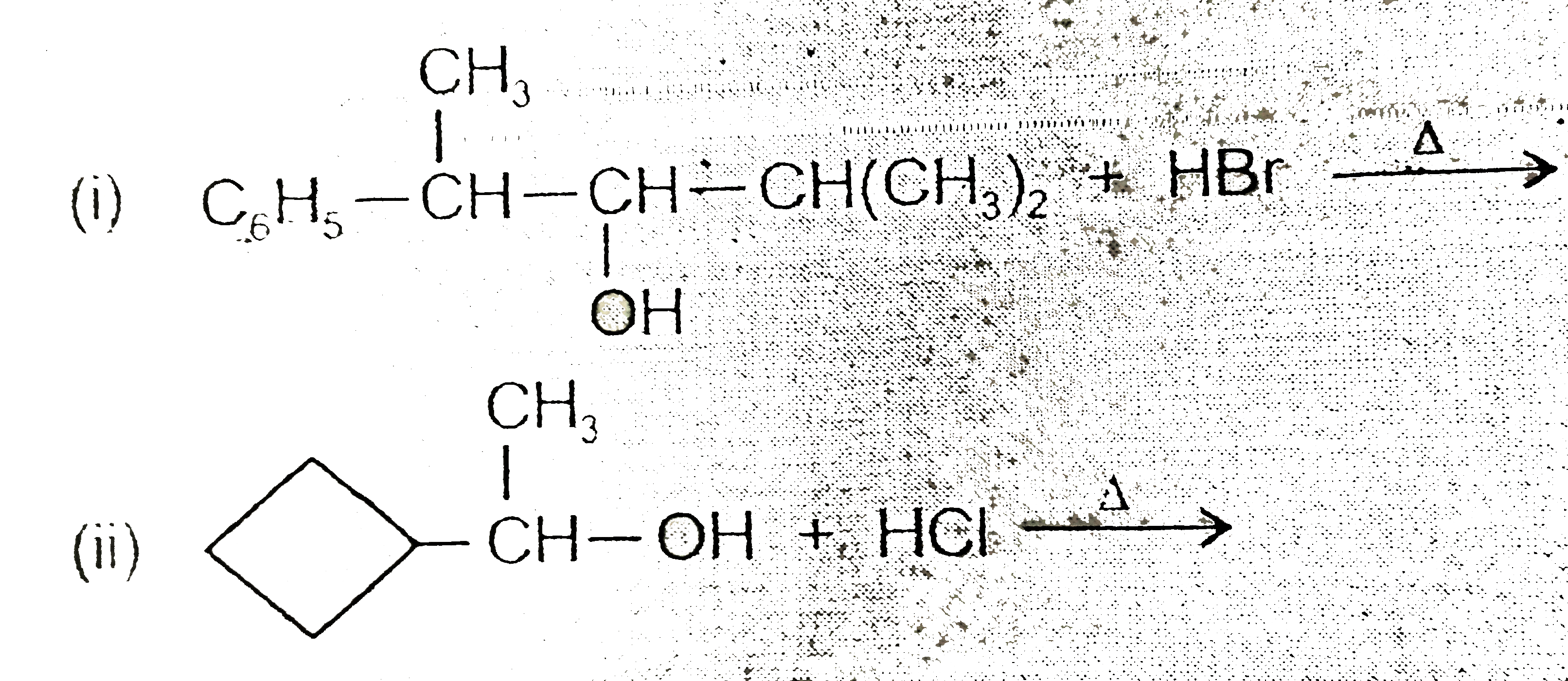Identify the major products in the following reaction.
C6H5COOH+MeMgI→?+?.
To identify the major products of the reaction between benzoic acid (C₆H₅COOH) and methyl magnesium iodide (MeMgI), we can follow these steps:
Step 1: Understand the Reactants
We have benzoic acid (C₆H₅COOH) which contains a carboxylic acid functional group. The other reactant is methyl magnesium iodide (MeMgI), which is a Grignard reagent.
Step 2: Identify the Active Hydrogen
In benzoic acid, the hydrogen atom of the carboxylic acid group (-COOH) is considered an active hydrogen. Grignard reagents are known to react with active hydrogens.
Step 3: Reaction Mechanism
The methyl group (Me⁻) from the Grignard reagent will react with the active hydrogen from the benzoic acid. This results in the formation of methane (CH₄) and a negatively charged carboxylate ion.
Step 4: Formation of the Carboxylate Ion
When the methyl group (Me⁻) attacks the active hydrogen, the hydrogen is removed, leading to the formation of methane (CH₄). The remaining part of the benzoic acid will now have a negative charge on the oxygen, resulting in the formation of the benzoate ion (C₆H₅COO⁻).
Step 5: Combine the Products
The products of this reaction are:
1. Methane (CH₄)
2. The benzoate ion (C₆H₅COO⁻) which will combine with the magnesium ion (MgI⁺) from the Grignard reagent, forming methyl benzoate (C₆H₅COOMgI).
Final Products
Thus, the major products of the reaction are:
1. Methane (CH₄)
2. Benzoate magnesium iodide (C₆H₅COOMgI)
Summary of Major Products:
- CH₄ (methane)
- C₆H₅COOMgI (benzoate magnesium iodide)
---
We have benzoic acid (C₆H₅COOH) which contains a carboxylic acid functional group. The other reactant is methyl magnesium iodide (MeMgI), which is a Grignard reagent.
In benzoic acid, the hydrogen atom of the carboxylic acid group (-COOH) is considered an active hydrogen. Grignard reagents are known to react with active hydrogens.
The methyl group (Me⁻) from the Grignard reagent will react with the active hydrogen from the benzoic acid. This results in the formation of methane (CH₄) and a negatively charged carboxylate ion.
When the methyl group (Me⁻) attacks the active hydrogen, the hydrogen is removed, leading to the formation of methane (CH₄). The remaining part of the benzoic acid will now have a negative charge on the oxygen, resulting in the formation of the benzoate ion (C₆H₅COO⁻).
The products of this reaction are:
1. Methane (CH₄)
2. The benzoate ion (C₆H₅COO⁻) which will combine with the magnesium ion (MgI⁺) from the Grignard reagent, forming methyl benzoate (C₆H₅COOMgI).
Thus, the major products of the reaction are:
1. Methane (CH₄)
2. Benzoate magnesium iodide (C₆H₅COOMgI)
- CH₄ (methane)
- C₆H₅COOMgI (benzoate magnesium iodide)
Topper's Solved these Questions
- GRIGNARD REAGENTS AND ORGANOMETALLIC REAGENTSBOOK - CENGAGE CHEMISTRY ENGLISHCHAPTER - GRIGNARD REAGENTS AND ORGANOMETALLIC REAGENTSEXERCISE - Exercises Archives (Linked Comprehension)
1 Videos
- GRIGNARD REAGENTS AND ORGANOMETALLIC REAGENTSBOOK - CENGAGE CHEMISTRY ENGLISHCHAPTER - GRIGNARD REAGENTS AND ORGANOMETALLIC REAGENTSEXERCISE - Exercises Archives (True/False)
1 Videos
- GENERAL PRINCIPLES AND PROCESS OF ISOLATION OF ELEMENTSBOOK - CENGAGE CHEMISTRY ENGLISHCHAPTER - GENERAL PRINCIPLES AND PROCESS OF ISOLATION OF ELEMENTSEXERCISE - Archives (Subjective)
14 Videos
- NCERT BASED EXERCISEBOOK - CENGAGE CHEMISTRY ENGLISHCHAPTER - NCERT BASED EXERCISEEXERCISE - Nuclear Chemistry (NCERT Exercise)
29 Videos
Similar Questions
Knowledge Check
Identify the major product of following reaction :
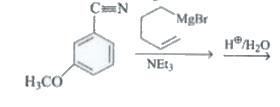 A
A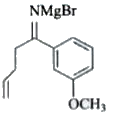 B
B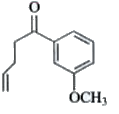 C
C DNo reaction
DNo reactionIdentify the major product of following reaction :
 A
A B
B C
C D
D
Identify the major product of following reaction :
 A
A B
B C
C D
D
Identify the major product in the following reaction

View SolutionIdentify the major formed in the following reaction
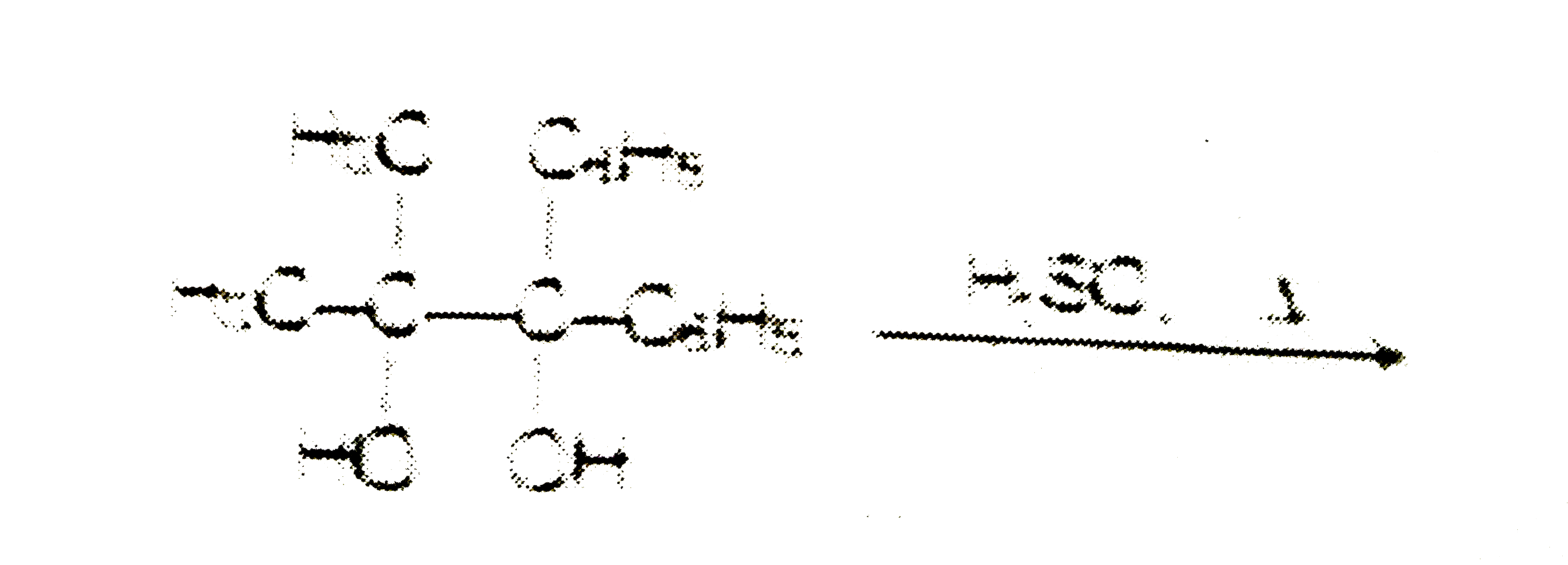
View Solution
Identify the major products of the above reaction ?
View SolutionIdentify the major product in the following reactions :
(i)
(ii) C6H5COOH+CH3MgI→?+?.
View SolutionIdentify the major product of the reaction :

View Solution

